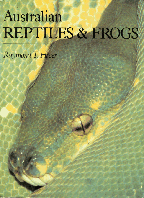
INCUBATING REPTILE EGGS
When eggs are laid, they should be removed from the cage. (The exceptions to this may be in the case of pythons which will attempt to incubate the eggs themselves, or reptiles which lay eggs in specially chosen sites in outdoor pits). Eggs should never be shaken or even turned over as this will kill the developing embryo. Most people mark the top of eggs with a cross or more preferably a number, with a pen, so that the orientation of the egg can be maintained if inspection of the egg is required during incubation.
Most eggs are best incubated at between 25 and 30 degrees celcius (usually at the higher end of this range). They should not be exposed to temperature fluctuations of more than about 1 degree celcius.
Eggs that are found adhered to one another should usually not be separated from one another, as this may cause breakage.
A number of different mediums can be used to incubate eggs. Eggs are best incubated in a container/s, such as almost any type of box, which have in place a medium such as sand, vermiculite, peat moss, or similar.
The eggs may be buried within the medium, although it is best to have the
eggs sitting half buried on the surface, so that they can be most easily observed, but won't easily move.
Eggs should be placed apart from one another, so that if one egg becomes diseased, it will not jeopardize the other eggs. In order to minimize risks to the eggs, sterile incubation mediums are preferable. When one egg is obviously infertile, or for some reason not going to hatch, it should be removed from the incubator containing the other still 'fertile' eggs.
The humidity at which eggs are kept at should be high, (usually 80-100%). No eggs should actually have water on them in normal circumstances.
If eggs appear to 'sweat' it is probably because moisture levels are too high, and this must be corrected. Eggs often shrivel up slightly during incubation. If eggs start to shrivel up in the early stages of incubation it may be due to insufficient moisture present. It this is the case, it may be acceptable to spray a small amount of water directly onto the egg.
Vermiculite is the preferred incubation medium for most reptile people. If this is used, do not use the 'fine-grade' as it binds and causes complications in the incubation process. Use the coarse grade of vermiculite. This is the most common variety sold. Vermiculite is commonly sold at hydroponics shops and some gardening outlets and is affordable to most people. When preparing the incubation medium, mix 45-50% water to 50-55% vermiculite (bone dry weight). This measurement is given on the basis that the vermiculite has no water already in it. Often the medium gains water from the air when stored.
Vermiculite can be dried out by baking in a low-heat oven before mixing, if desired. If the vermiculite sticks together, it is probably too moist. The correct medium should be loose and fluffy (not sticky).
The incubation chamber should have a constant temperature throughout it (often achieved by having one container inside another (e.g. a plastic box inside a wooden incubator). Condensation problems near the eggs should be avoided and this only occurs when there is an uneven temperature in the incubation area.
Air circulation in the incubation container need only be minimal, but there should be at least a minor airflow (i.e. through one or two pin-prick sized holes), to allow the eggs to 'breathe'.
Fungus may be found on an egg. This will usually be on the underside. Should this occur one should wipe the underside of the egg clean of all surface fungus, change the incubation medium, and keep the affected area bone dry. A very dilute anti-fungal solution may be applied to the affected areas of the egg, although extreme care is required here.
To monitor development of an egg, one can hold it against a very bright light and usually see the developing embryo within.
After the first egg has hatched, the others should be watched closely to make sure that hatchlings have no trouble escaping from the egg. If unable to escape from the egg, they may suffocate. If there is any doubt about hatchlings emerging from their eggs, then it is advisable to slit the tops of those eggs. The young should not however be removed from the eggs. It is common for young reptiles to remain within the egg for some time after rupturing the shell with their egg tooth.
To continue to the rest of this section (Diseases, ailments, etc)

The above was from the book Australian Reptiles and Frogs by Raymond Hoser and now available on a fantastic CD-Rom along with a vast amount of other information, papers and the like on reptiles, frogs and other wildlife.